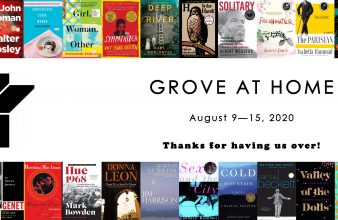News Room
- Home
- News Room
- Book Reviews
- New York Times Raves...
An Odyssey Through Self-Harm and Out the Other Side
Memoir writers, not unlike Blanche DuBois, depend upon the kindness of strangers. Although such writers are often saddled with accusations of narcissism and self-indulgence, what commonly gets overlooked is the tremendous vulnerability that inheres in exposing oneself to the world’s scrutiny. The wish to tell one’s story may be stronger than the anxiety of exposure, but not by much; there is always the chance that your story will meet with a different response than the one you’re hoping for. Indeed, the violation of privacy that memoirs specialize in is as often reviled as praised. As social media has made clear, most of us go public by putting our best face forward, sharing our triumphs and achievements rather than our sorrows or failures. Memoirists, especially good ones, tend to reveal the hidden anxieties and conflicts underlying their lives, and in doing so take the risk of being judged not only on the quality of their prose but on the content of their character. In a self-promoting culture, they dare to lead with their worst side.
We learn about LeFavour’s early life in tantalizing bits and pieces…
Cree LeFavour, in her new memoir, “Lights On, Rats Out,” exhibits a rare willingness to take the reader into difficult and sometimes unpleasant territory. LeFavour, who has written several cookbooks, here gives us a riveting account of a “particular kind of crazy” — namely, the damaged and self-damaging young woman she once was. From its very first page, we are on the dark side of the moon, where logic holds no sway and all that matters is the next “pinprick of pain-pleasure” provided by the narrator’s burning her arms with cigarettes. She is matter-of-fact about her compulsive self-mutilation, almost a tour guide, quick to explain that there are four degrees of burn, ranging from the “superficial” (comparable to an injury you might incur while baking) to the “meanie” fourth-degree variety that extends through the subcutaneous tissue, “including muscle and bone.” LeFavour tends to prefer third-degree burns, which destroy the epidermis and much of the dermis but leave the muscle and bone intact. “There’s no going halfway,” she coolly points out about playing with fire — “firsts are a joke and minor seconds aren’t my element.”
It is 1990, and LeFavour — “a bulimic, unhappy, confused 24-year-old,” and recent graduate of Middlebury College — is living in Burlington, Vt., working as a social welfare advocate when she isn’t reading novels or seeing Dr. Adam Kohl, her psychiatrist. (Her book draws verbatim on the notes her psychiatrist kept during their relationship as well as on hospital records.) Dr. Kohl, whose “brown eyes communicate a dangerous intelligence and sensational warmth,” is her lifeline over the three years she sees him in therapy; he is a reliable, trustworthy presence in an otherwise tentative and isolated existence, one she has carved out in response to the colorful but unnurturing circumstances of her childhood: “Being in his presence is to be recognized.”
We learn about LeFavour’s early life in tantalizing bits and pieces, including the harrowing neglect and deprivation that went on under the image of an enviably carefree, rich-hippie existence. Her father is a “gentle, brilliant and emotionally withdrawn” chef who lives partly on trust-fund money and who opened two well-regarded restaurants during the ’60s and ’70s with her mother — the first in Aspen, where Hunter S. Thompson was a neighbor and friend, and the second in central Idaho, where the schooling was haphazard. The booze and drugs are as plentiful as the parental caretaking is lacking; LeFavour’s mother sounds like a lost child herself, someone who “once played at being an artist” but mostly escapes into drink and eventually runs off with a woman, the better “to enjoy her second adolescence.” (“My mom not a mom, just not mothering type,” Cree observes to her shrink.)
Her parents separate when LeFavour is 13, after which she lives alone and “parent-free” with her older sister, Nicole, while she attends high school in Sun Valley, Idaho. The house the two siblings share is “as soulless as the cement slab it rested on, as unattractive as the bulldozer tracks that served as a yard,” and they are left completely to their own devices: “Nicole and I were free to stay out all night, drink, have sex, do drugs, or sleep all day.” This grim picture of abandonment is undercut by the narrator’s tendency to minimize what went wrong — “I’d long believed my childhood was privileged and, if not ordinary, not a significant factor in my uneven mental state” — and to make light of her own self-destructive impulses, along with the discomfort in her own skin that fuels them. Except when she all of a sudden comes heart-stoppingly clean: “I’m actually scared,” she writes, “by the power of the compulsion. I have an inkling of how a serial killer feels, the pressure to do the deed building until there’s no stopping it because the momentum of inevitability beats down the part of the mind that doesn’t want to repeat the offense.”
—
by Daphne Merkin for The New York Times







